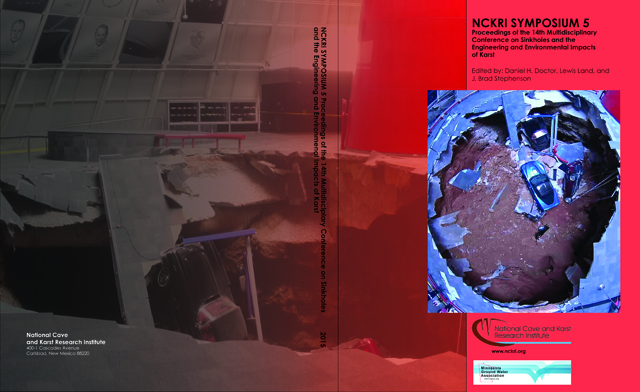Abstract
The mechanisms of sinkhole formation, development, and collapse are investigated in this study using experimental and numerical methods. Sandbox experiments are conducted to understand how excessive groundwater pumping triggers sinkholes formation. The experimental results indicate that the change of hydrologic conditions is critical to sinkhole development. When seepage force increases due to increase of hydraulic gradient, clay and sand particles start moving downward to form a cavity. The confining unit is of particular importance because the cavity is first formed in this layer. Based on the conceptual model developed from the sandbox experiments, the Fast Lagrangian Analysis of Continua (FLAC) code and Particle Flow Code (PFC) are coupled to simulate the sandbox experiments. PFC was used to simulate particle movement in the sinkhole area, and FLAC is used for other areas. While the current numerical simulation can simulate the experiment results such as the sizes of the cavity and the sinkhole, the simulation capability is limited by the computing cost of PFC. More effort of model development is necessary in the future study.
Rights Information
DOI
http://dx.doi.org/10.5038/9780991000951.1052
Experimental and Numerical Investigation of Sinkhole Development and Collapse in Central Florida
The mechanisms of sinkhole formation, development, and collapse are investigated in this study using experimental and numerical methods. Sandbox experiments are conducted to understand how excessive groundwater pumping triggers sinkholes formation. The experimental results indicate that the change of hydrologic conditions is critical to sinkhole development. When seepage force increases due to increase of hydraulic gradient, clay and sand particles start moving downward to form a cavity. The confining unit is of particular importance because the cavity is first formed in this layer. Based on the conceptual model developed from the sandbox experiments, the Fast Lagrangian Analysis of Continua (FLAC) code and Particle Flow Code (PFC) are coupled to simulate the sandbox experiments. PFC was used to simulate particle movement in the sinkhole area, and FLAC is used for other areas. While the current numerical simulation can simulate the experiment results such as the sizes of the cavity and the sinkhole, the simulation capability is limited by the computing cost of PFC. More effort of model development is necessary in the future study.

